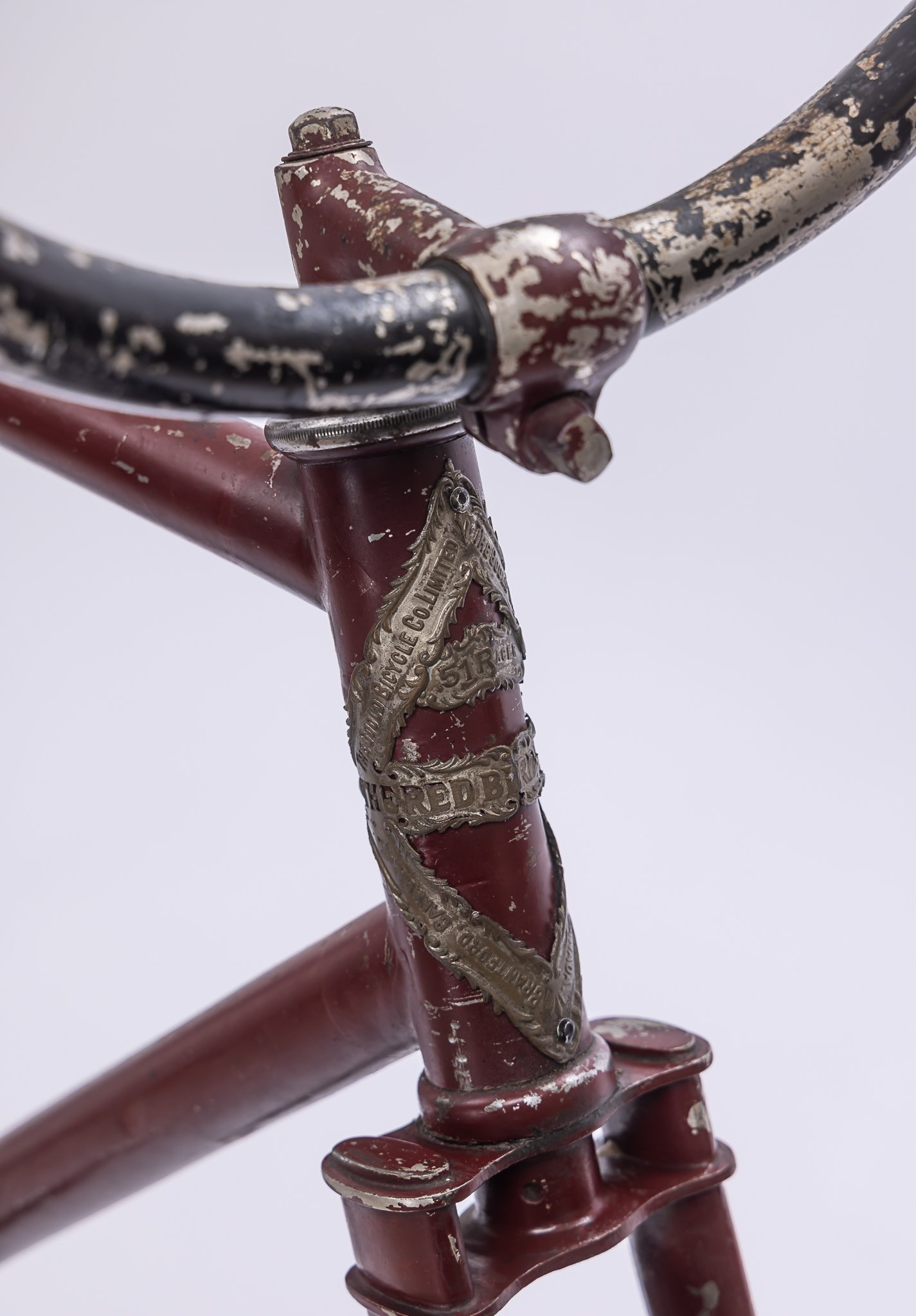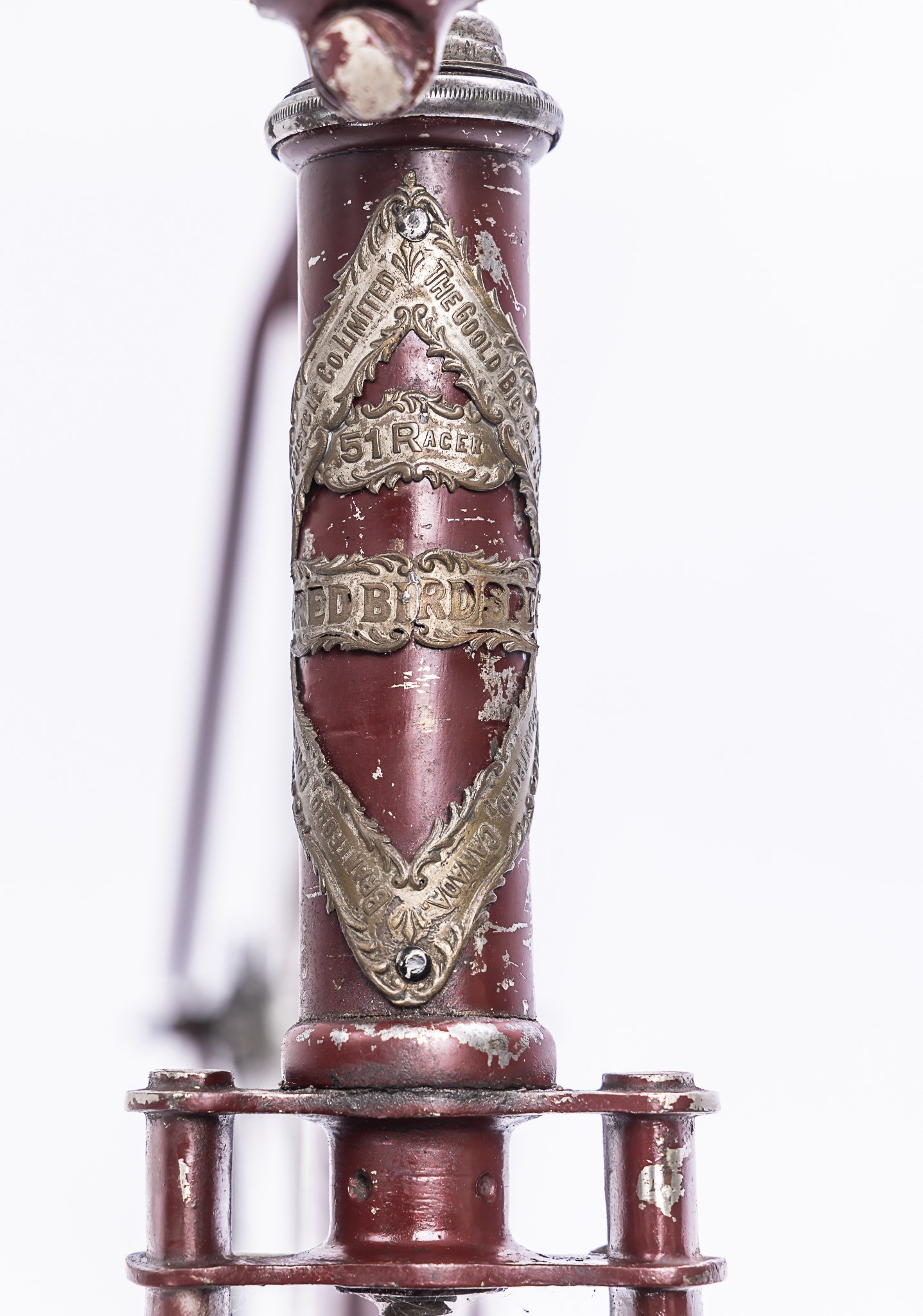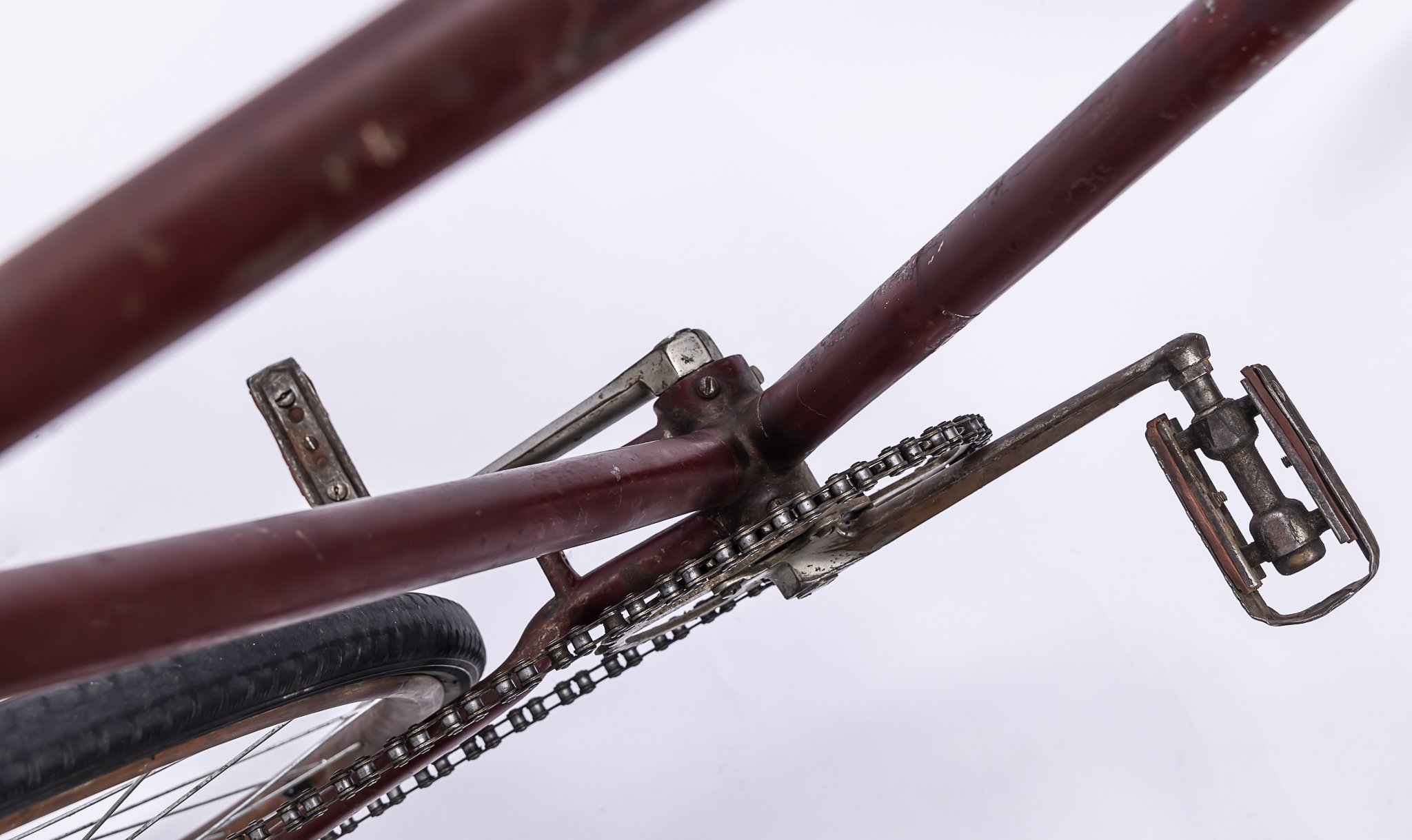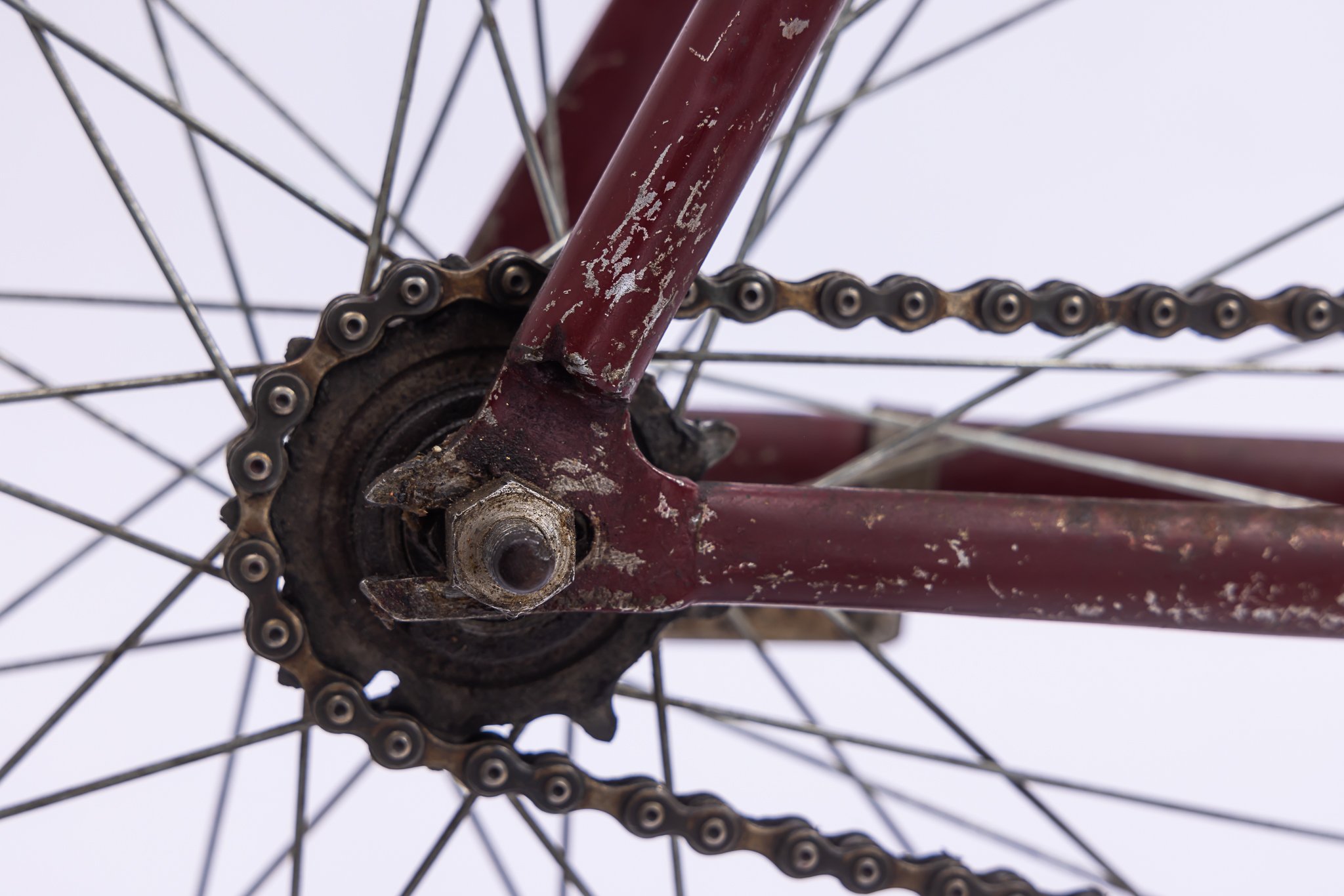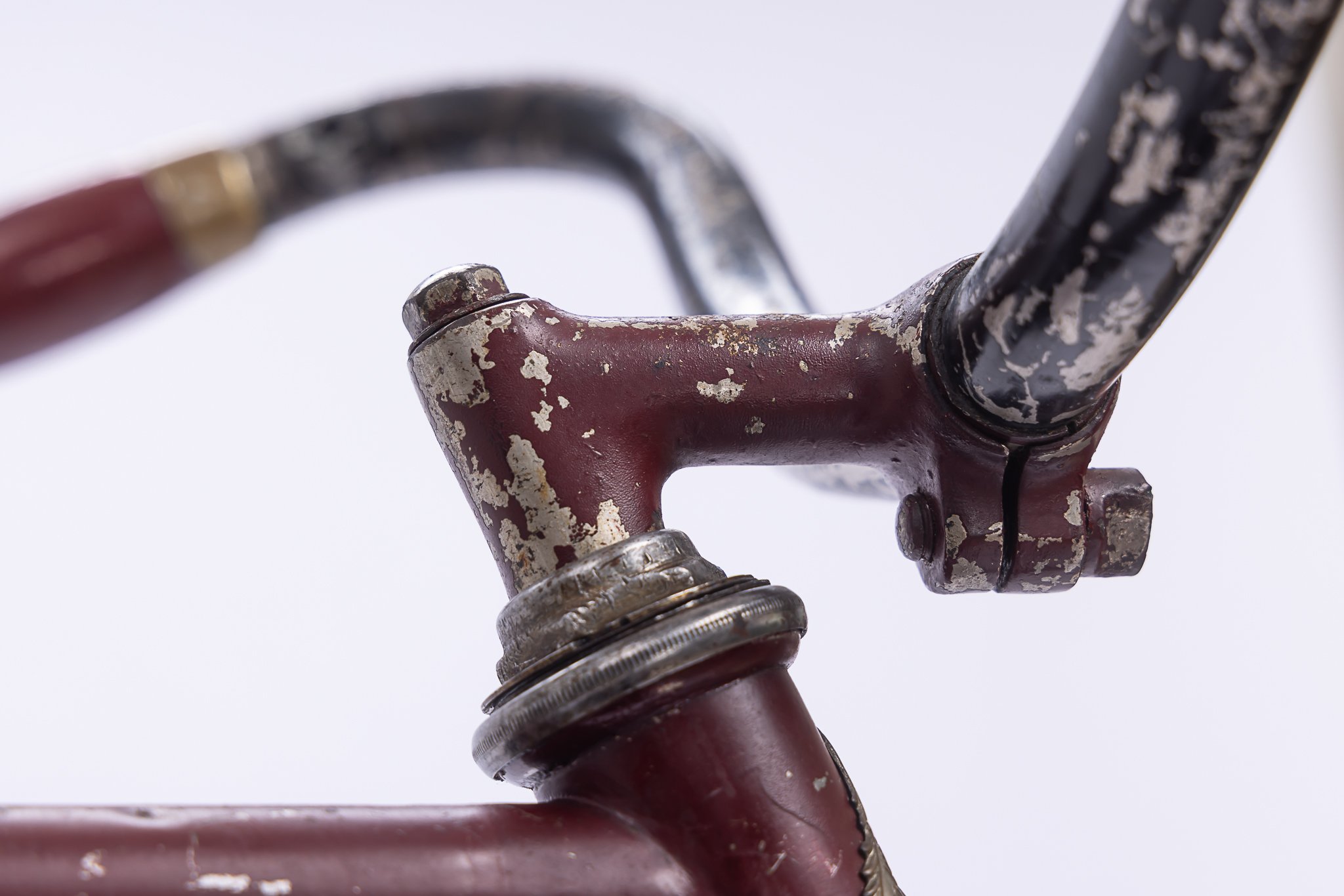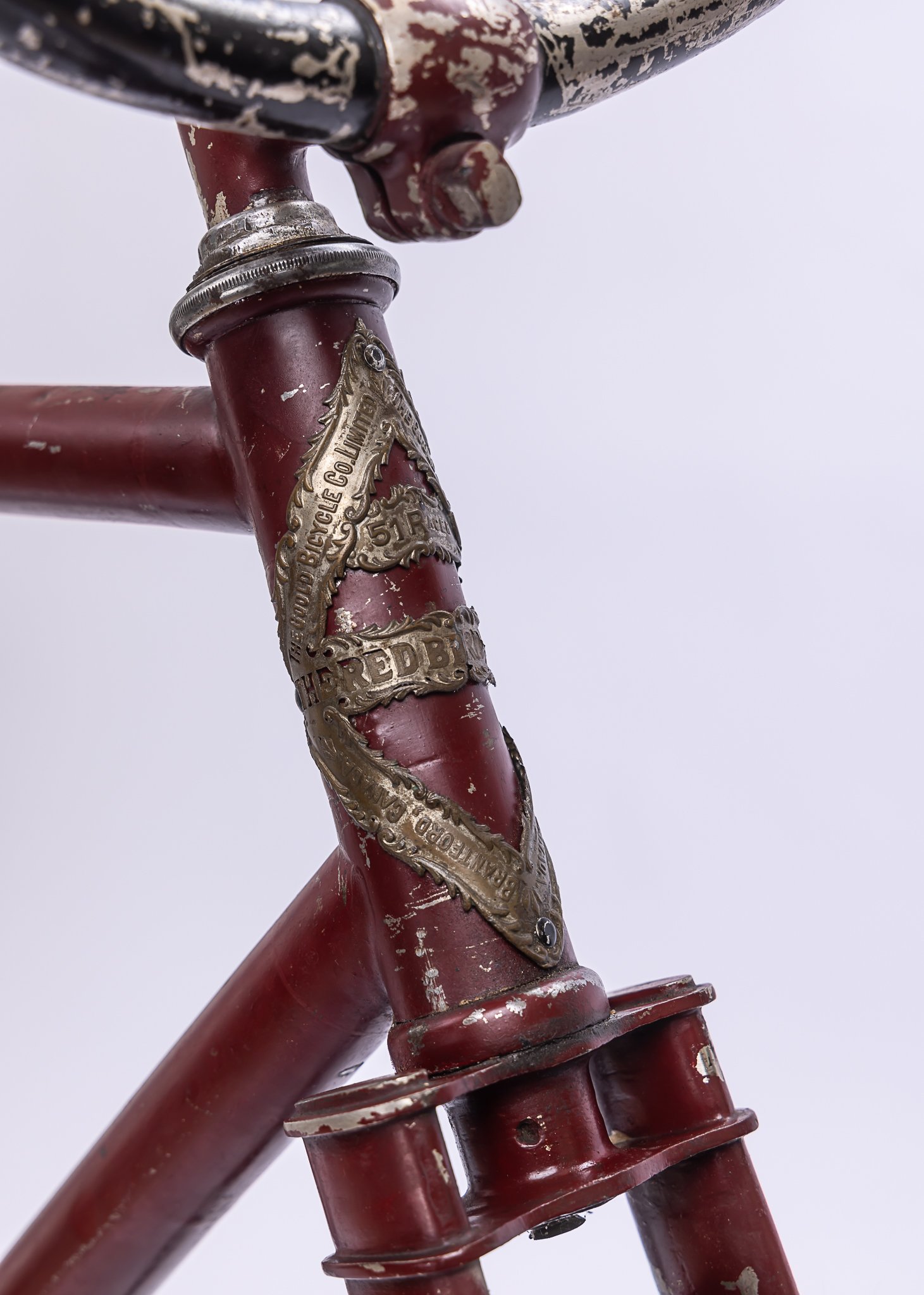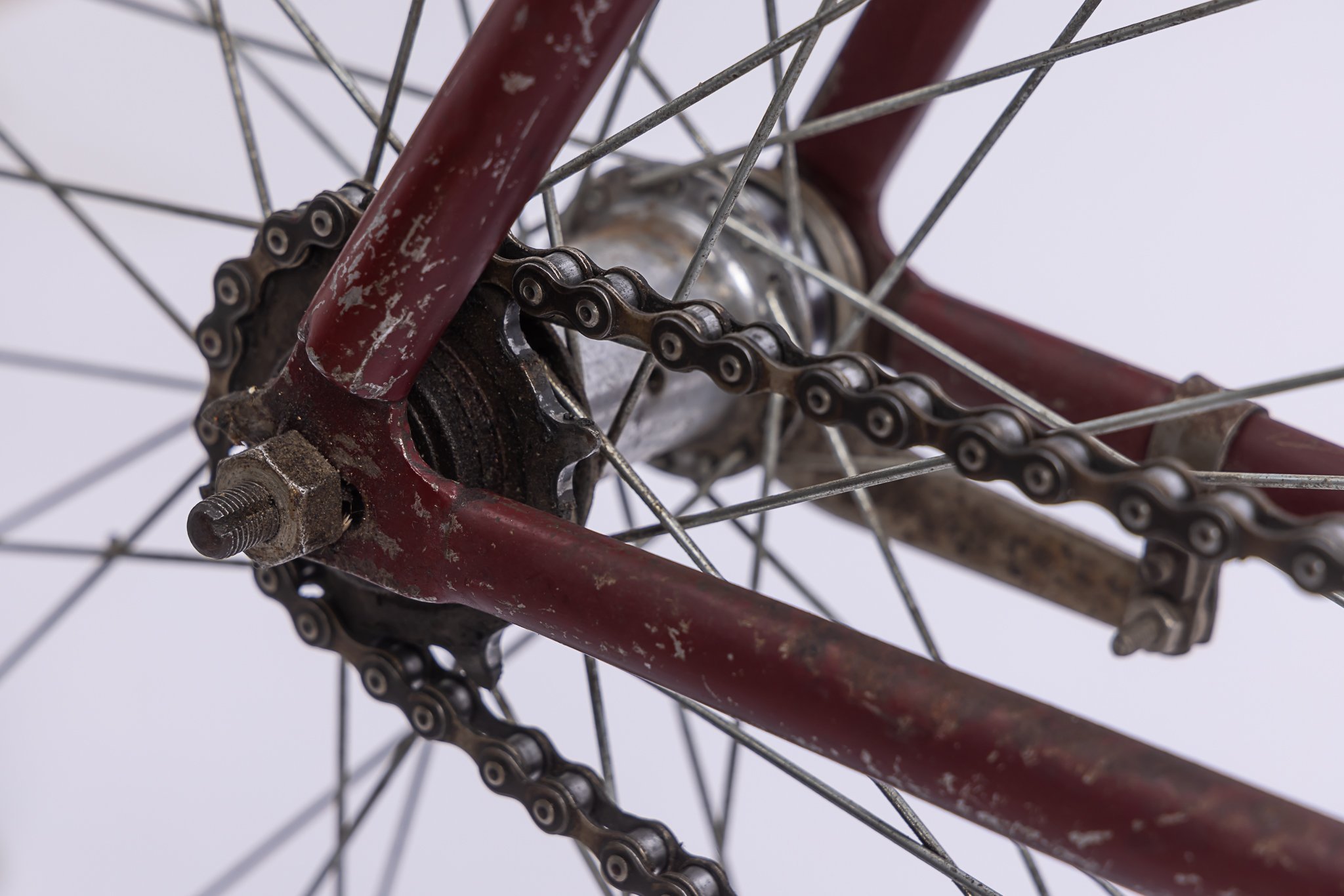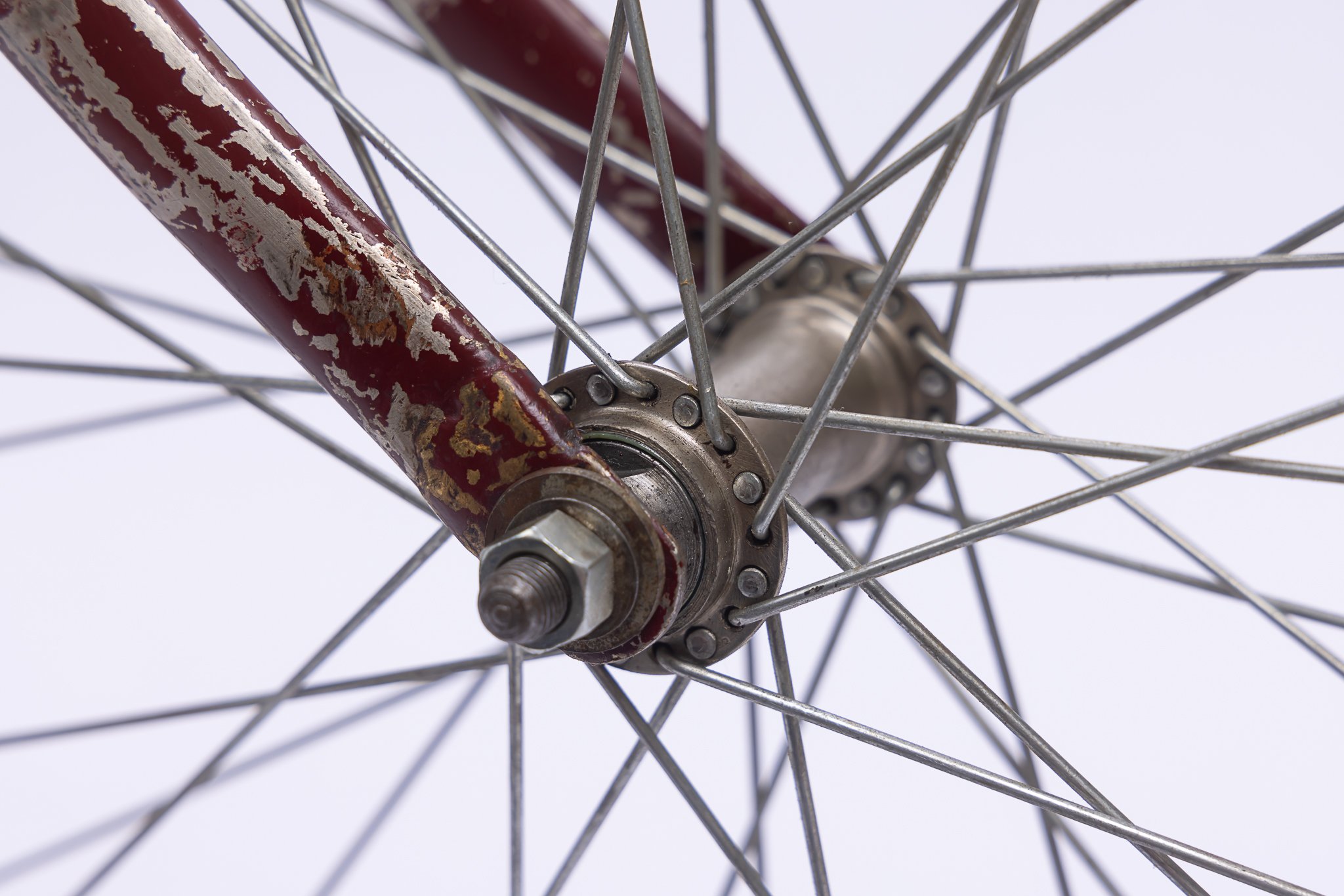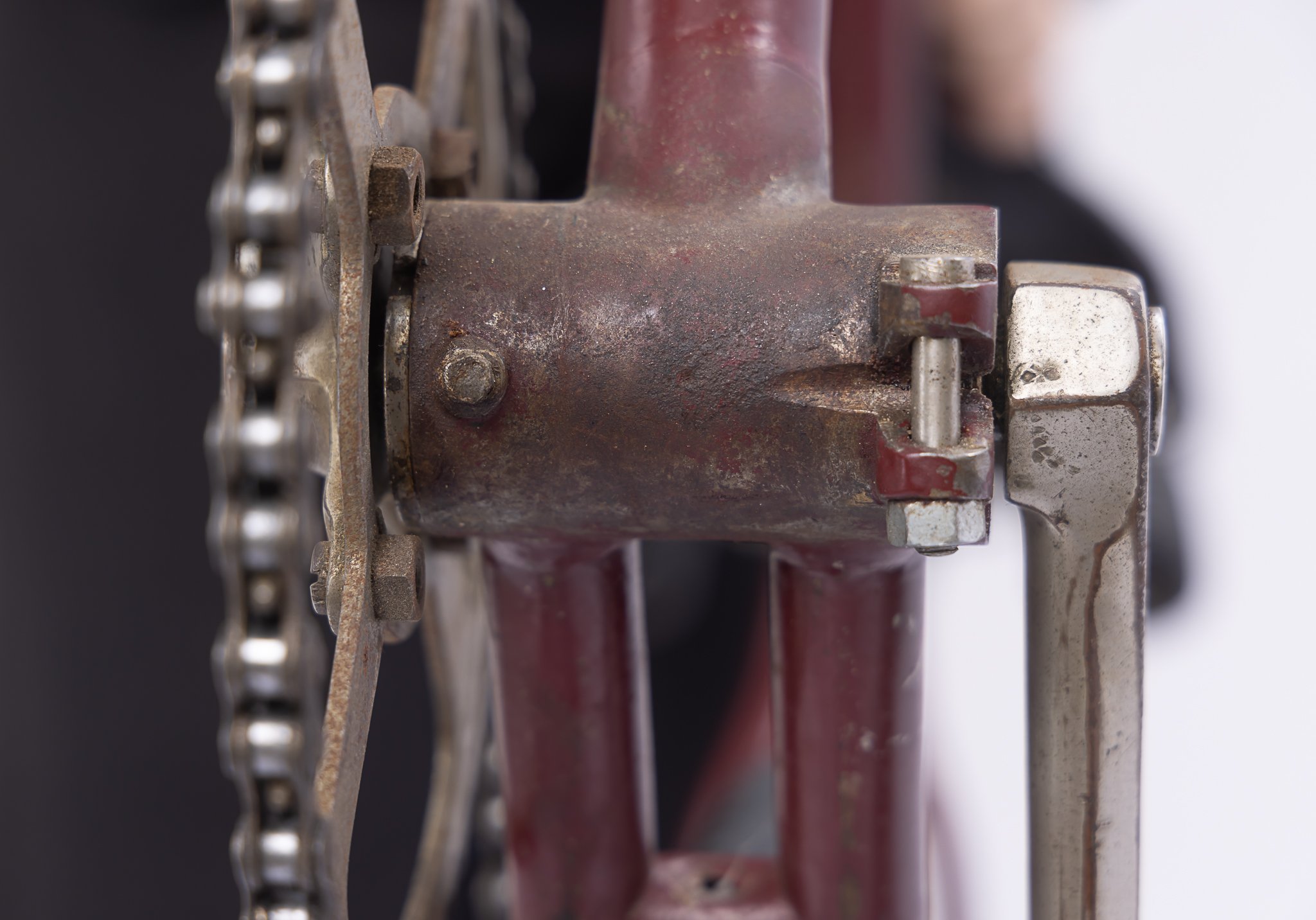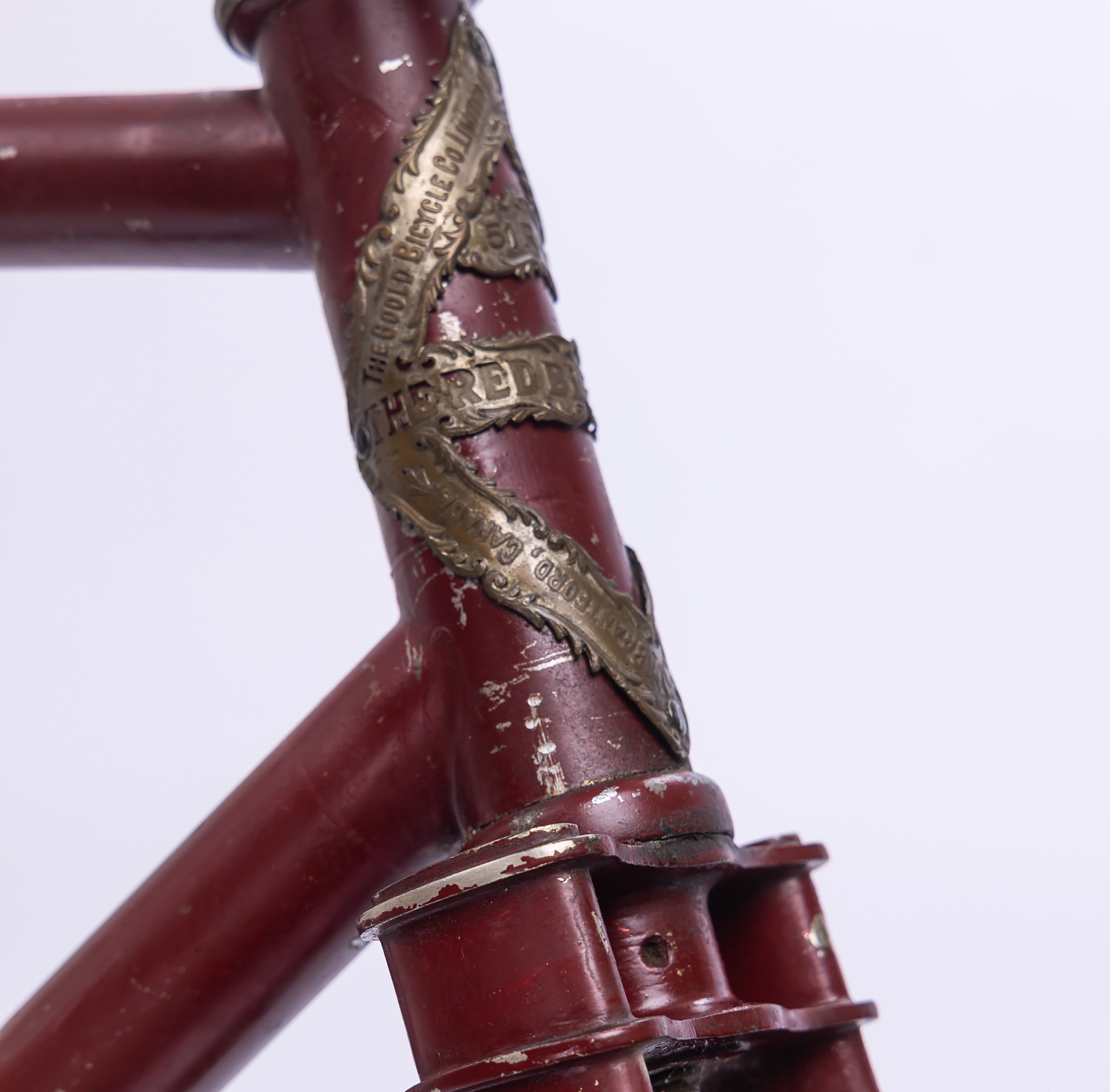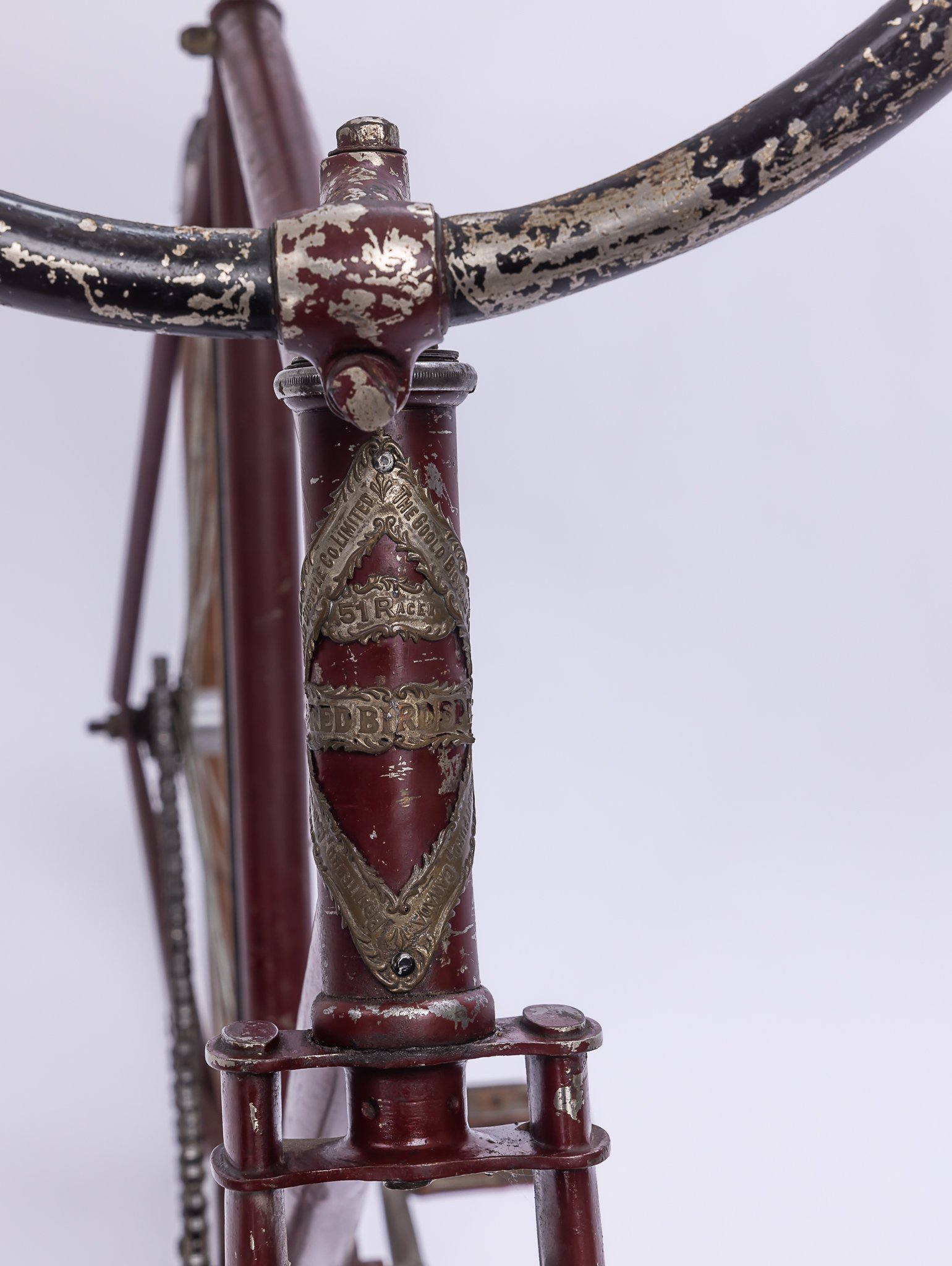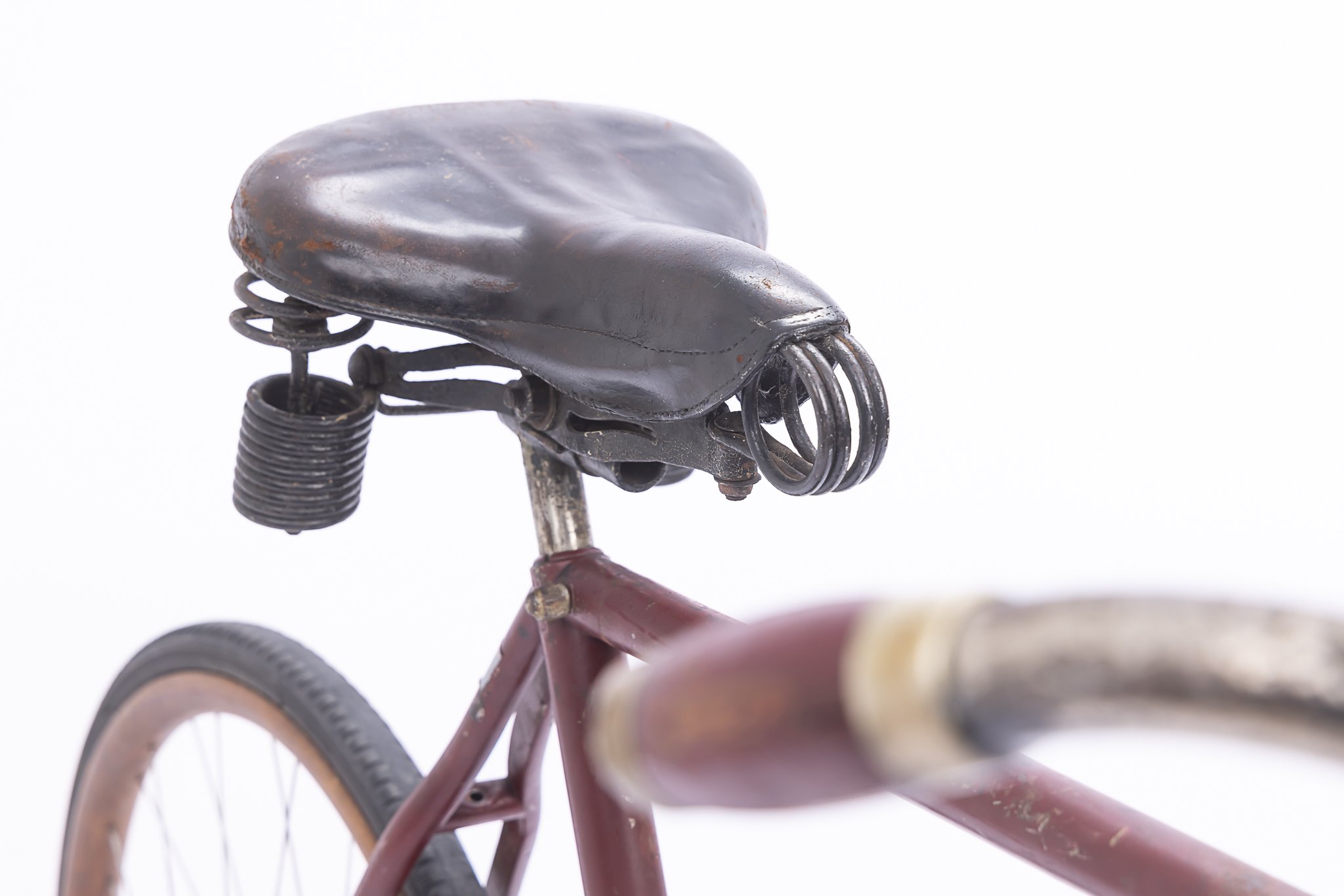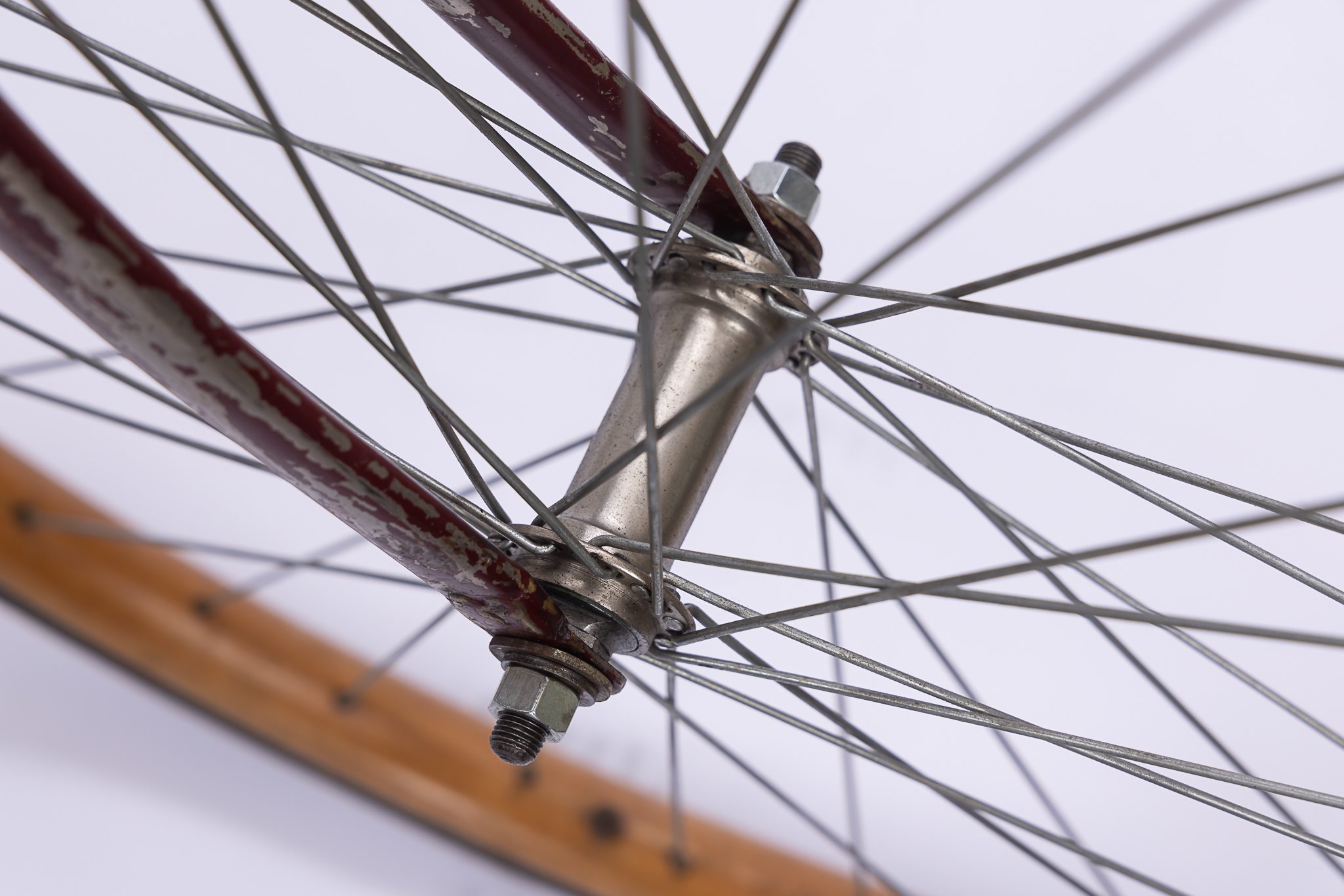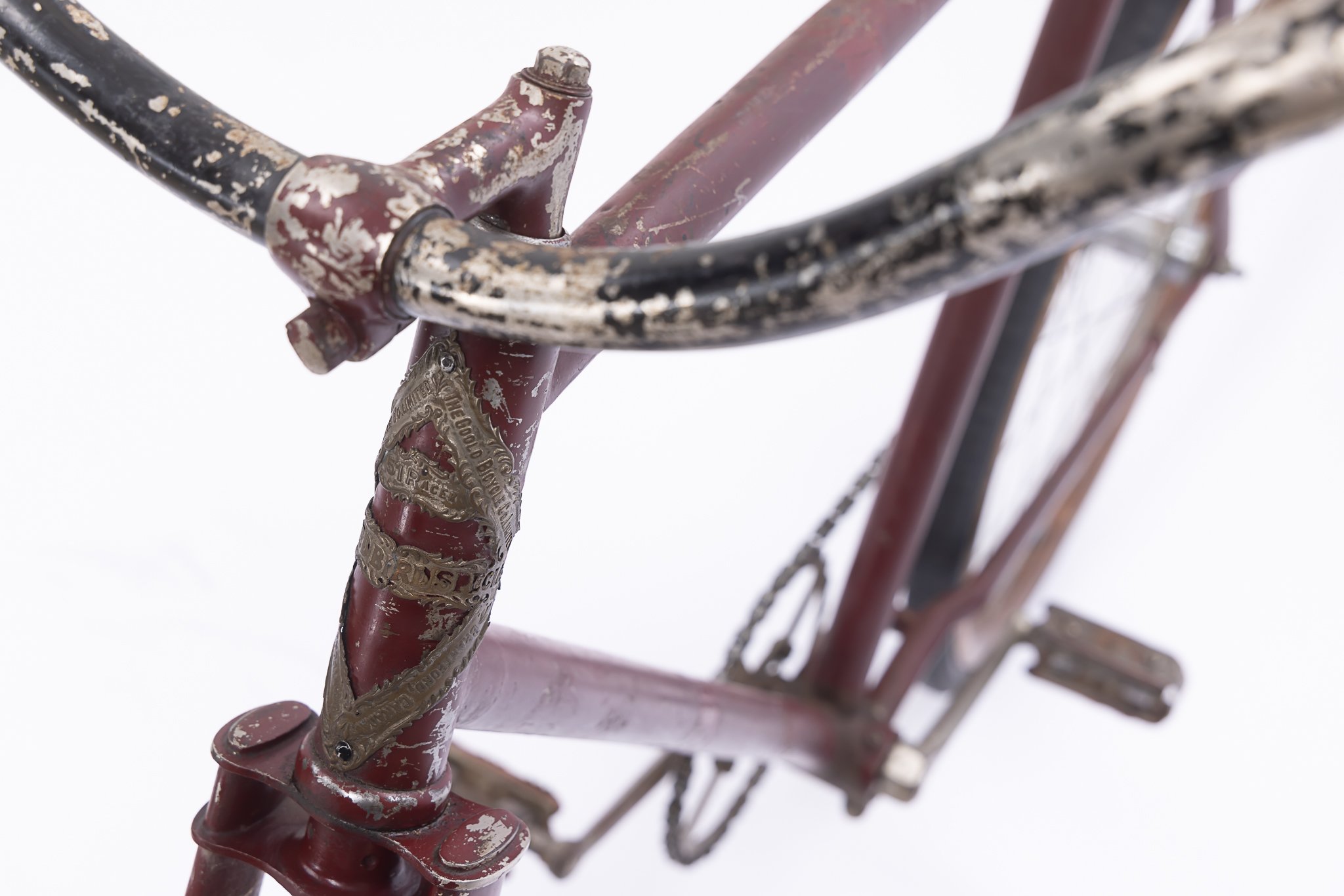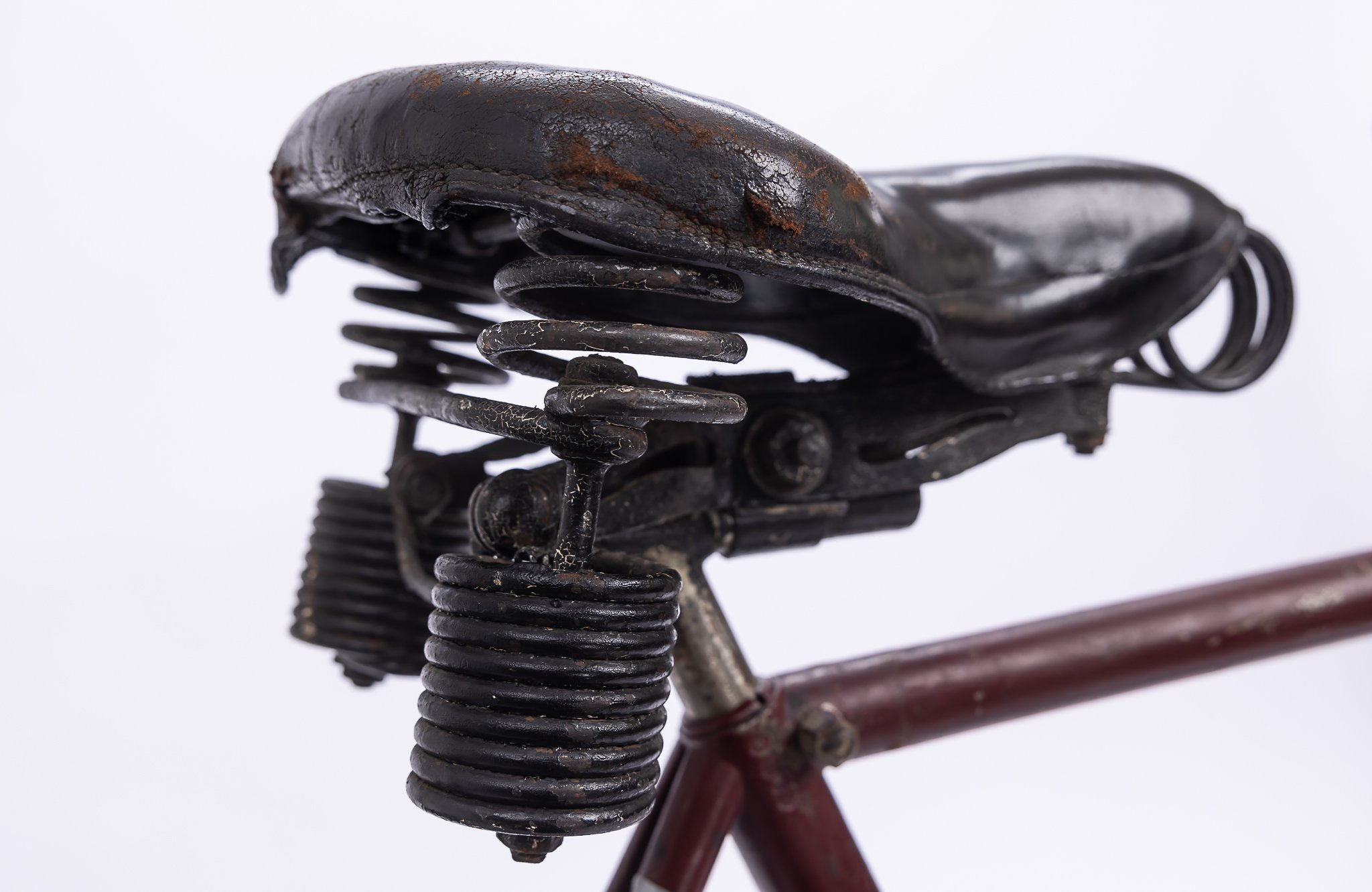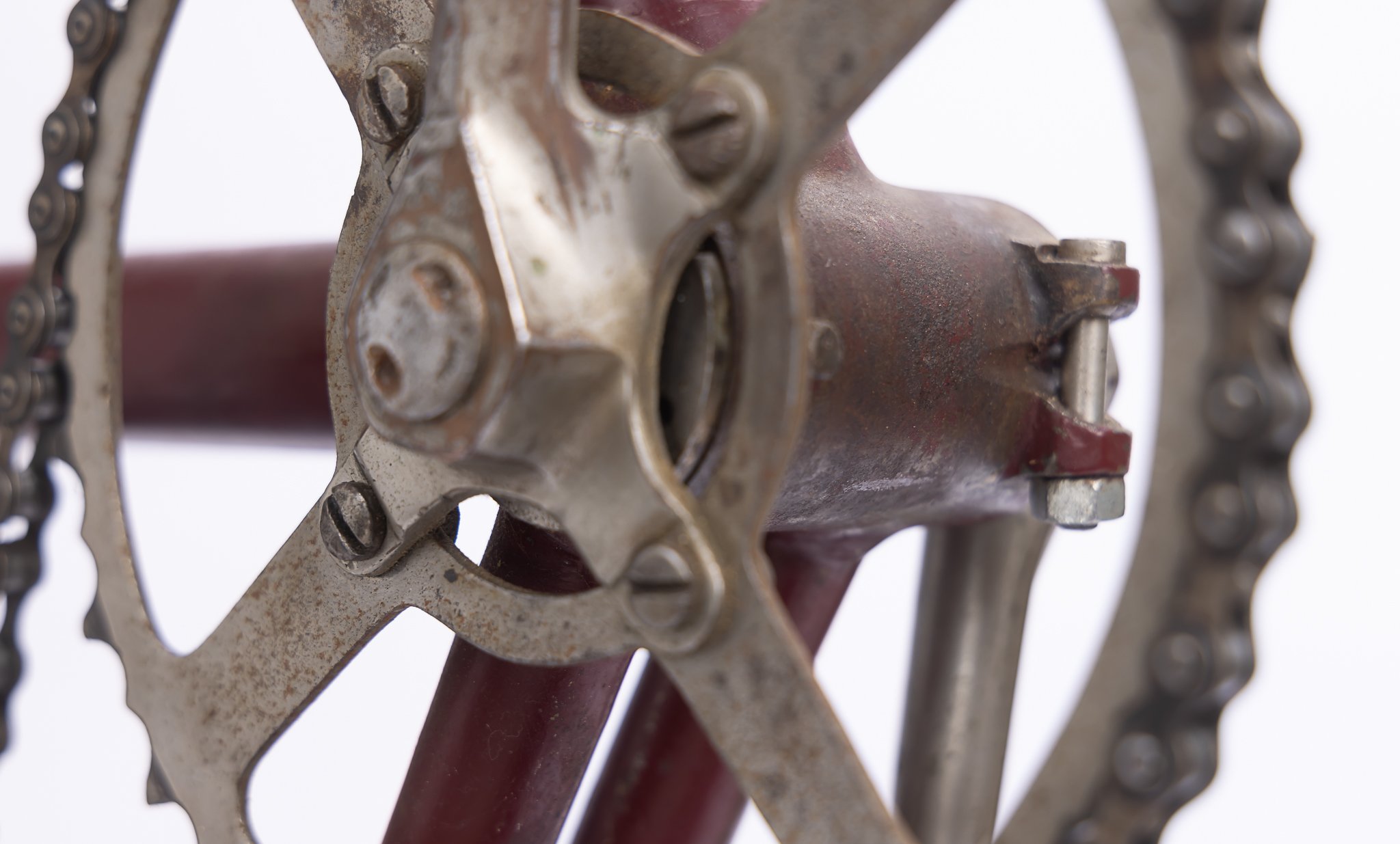Dear Reader, last week in Karl Chronicle #86, we ended with me staring wide-eyed at a bike that may have been Karl’s when he cycled around the world. Gordon, the owner of the bike, couldn’t say for certain that it was Karl’s bike, but he couldn’t say for certain that it wasn’t!
So, the moment you’ve been waiting for — answers to the questions I bet you’ve been wondering about all week.
Is Gordon’s bike a Red Bird?
There have been some changes to Gordon’s bike - including fenders, new handlebars, and a few holes in the frame when other pieces were attached. But what is original to the bicycle is the head badge. In the late 1800s, manufacturers screwed a metal head badge onto the tube of the bike. There was a lot of care in the creation of those head badges back in the day, as they are what distinguished bikes. The fancier the head badge, the better the bike. It’s the mark of the maker, no different than car hood ornaments or a figurehead on the bow of a ship. The head badge could be artistic, ornamental, and intricate to represent the bike quality.
Gordon’s head badge indicates his bicycle is a “Red Bird Special”, “51 Racer”, manufactured by the Goold Manufacturing Co. Limited in Brantford, Ontario.
The Goold Company was established in 1888 by Brantford-born Edward Goold and colleague William Knowles. In 1891, the company employed 50 men and manufactured 1,500 bicycles a year. Two years later, Goold built a bigger factory in Brantford with over 350 men producing up to 100 bicycles daily.
Could it be “the” Red Bird that Karl rode worldwide?
To answer this, I first needed more details about the 51 Racer.
No sooner than Karl received his Red Bird in Brantford, July 1899, did the Goold Bicycle Company amalgamate into Canada Cycle & Motor (C.C.M), comprised of four Canadian bicycle manufacturers: Goold Bicycle Co., H.A. Lozier, Massey-Harris, and Welland Vale. C.C.M formed to compete with the American market when 42 American manufacturers merged.
So I started my research with the Vintage CCM Forum.
The forum is the passion project of John McKenty, a retired high school principal living in Perth, Ontario. He is a collector of CCM memorabilia and wrote a book entitled: Canada Cycle & Motor: The CCM Story tracing the history of CCM. Shortly after, John established the Vintage CCM forum to continue the conversation about this Canadian company that lasted until 1983 and left a legacy of memories for many Canadians who owned a CCM bike.
After sifting through the archive articles and forum chats, I registered to become an “official member” of the forum to tap into the expertise of this group. The members are collectors and passionate CCM history aficionados. I started a new chat in the forum and simultaneously began to sift through archived newspaper ads from 1899 to 1901. Slowly the story came together. I learned a lot about cranks, wheels, frames, running bearings, chains and, yes, some information about Gordon’s 51 Racer.
Thanks to a member from the CCM forum, I got a copy of the Goold Company catalogue from 1899, detailing the 51 models. The 51A was a road bike, 51B was a lady’s bike –– built with a step-through frame to accommodate wearing a dress –– and the 51G was the racer. The 51G is Gordon’s bike.
So, is it “the” Red Bird that Karl rode around the world?
Well, dear reader, what we know so far is Gordon’s bicycle is definitively a Red Bird Special, Model 51 Racer made by the Goold Bicycle Company in Brantford. I was hopeful I’d be able to be as conclusive that this vintage bicycle found in a dump in Bible Hill, Nova Scotia, near the Creelman family home and made its way to Gordon was Karl’s Red Bird. But I don’t believe this to be the case.
You see, the other part of this story are the references in the research materials about Karl’s Red Bird.
On Tuesday, July 25, 1899 a letter to the editor was posted from Karl himself from the Rankin House hotel in Chatham, Ontario. “I am getting along slowly, have had a few delays but will travel faster now. Send me the ‘News’ to Wellsboro Indiana. Will write you from Chicago or Milwaukee. I ride an Australian 1900 model of the famous Red Bird now, which seems to be the favourite wheel in Ontario.” Karl M. Creelman.
Similar to car manufacturers today, bicycle manufacturers used to debut the next model year of their product as early as the spring of the current year. In other words, the 1900 model of the Red Bird would have been launched in the spring of 1899. The Goold Bicycle Co.had retail outlets in Toronto, Montreal, Saint John, Winnipeg and Sydney (Australia) so who better to help promote the new Red Bird than the man who was to ride it around the world with plans to soon be in Australia.
Goold was quite savvy with its international marketing strategy, where bicycle newspaper advertisements emphasized the colonial relationships of the British Empire. In Australian newspapers, images of the newest Red Birds were accompanied with phrases including: “made under the flag”, “good things from the colonies”, “the Red Bird is a Colonial Machine, specially suited to colonials”, and “the best wheel manufactured, sold and ridden under the British flag”. In fact, Goold went so far in one of their ads with an image of Miss Australia beside a kangaroo with outstretched arms to receive a bicycle from Miss Canada standing beside a beaver and the caption: Miss Canada gives to her sister Colony, Australia the World’s best bicycle.
The 1900 models of Red Birds were being shipped mid-1899 and an advertisement in a local New Zealand newspaper promoted the “Red Bird Bicycles 1900 Model” indicating that it was the Model 52 and Model 55.
This reference to Model 55 came up frequently in the articles written about Karl’s Red Bird. The day after he arrived in Rockhampton, Australia the local morning bulletin newspaper shared with its readers Karl’s journey to date and his arrival at Mr T. Kingel’s local Red Bird agency where his bicycle was on view. Another Rockhampton newspaper writes “he speaks in glowing terms of his Red Bird Model 55, which has carried him through in a wonderful manner. Not one part shows the slightest sign of wear, although its plumage is sadly ruffled owing to the awful knocking about it received in the mountain trials.” And of most significance, in extracts from the Chicago Dailies, “Red Bird, Model 55, which carries Creelman” including an image of the Model 55 and sketch of its frame joint.
And so, dear reader, all of that to say, sadly, despite all hope, Gordon’s Red Bird bicycle is not Karl’s.
But it belonged to someone, and many theories could be contrived about how it arrived in that dump in Bible Hill near Karl’s childhood home. My own story is that when Karl returned to Nova Scotia a local hero, many people would have been clamouring to own a Red Bird bicycle regardless of model. I’d like to think that those Red Birds were prolific in Colchester county, locals cycling around the town dreaming of places outside of Canada thanks to Karl’s endeavours to cycle the world awheel.
All this research was quite the detour on our journey, but one that provided me with an opportunity to connect with passionate vintage bicycle collectors, restorers, and historians. Special thanks for the kindness and patience guiding me on this search from Bill Rudolph, Dave Brown, Ron Miller, John McKenty and of course, my new friend Gordon Troop.
As you know, dear reader, I routinely thank Karl for my experiences on this journey, and this investigation with Gordon and his Red Bird is seminal. And although Gordon’s Red Bird is not Karl’s, it is a piece of Canadian history and I felt this 1899 Model 51 deserved to be photographed like a supermodel. I hope you enjoy some photos captured of the Red Bird, with special thanks to fellow photographer Geoff Creighton.
1) New Zealand - Manawatu Standard, Volume XXXVIII, Issue 6629, 22 February, 1900

